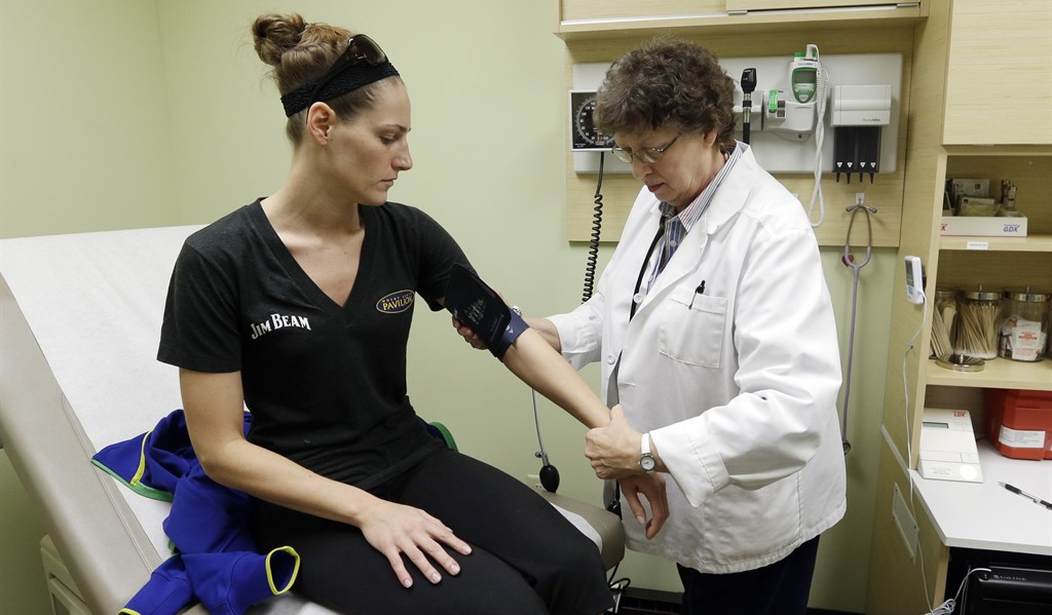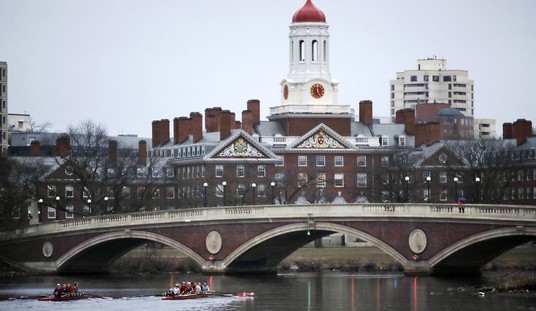For much of America’s history a house call from a local physician was the standard way to obtain needed health services, but as the U.S. health care system became increasingly more complex – especially the way physicians get paid – behemoth service providers formed as a way to cut costs and use resources more efficiently. After decades of experimentation, skyrocketing health care costs, and intrusive government action, the house call is returning, along with other innovative small-business models that provide convenient quality care at significantly lower costs.
Direct health care services provide health care directly to the patient with few or no other businesses involved in the process, which greatly reduces costs. In a report by Wbay.com, an ABC affiliate in Green Bay, Wisconsin, reporter Andrea Hay interviews direct-care nurse practitioner Rachael Cabral-Guevara, an Appleton-based service provider who has chosen to reject what has become the traditional model for establishing health care by making house calls and providing services at reduced costs. Cabral-Guevara says she’s been able to keep costs low by avoiding working with health insurance companies, which are heavily regulated, whenever possible.
“In direct health care, you take out a lot of overhead,” said Cabral-Guevara to WBAY.com. “You take out a lot of the ‘middle people’ in regards for billing insurance. I don’t bill insurance whatsoever. By taking out that portion, I’m able to reduce my costs anywhere from fifty to seventy percent cheaper than any larger system around here.”
Cabral-Guevara says she charges between $20 and $115 for basic primary care services, including providing prescriptions, treating common illnesses, and administering basic exams.
House calls are now being used to cut the cost of receiving primary care, but studies show house calls by doctors or nursescan also be used to treat very sick patients, as Laura Landro reports for The Wall Street Journal: “Across the U.S., home-based primary-care practices are sending doctors, nurses and other clinicians on regular house calls to older, infirm patients. The goal is to prevent costly hospital stays and admissions to long-term-care facilities, while improving the quality of care, especially for the sickest 5% of Medicare beneficiaries, who account for 50% of the federal program’s costs.”
Recommended
Patients, especially older patients, often find themselves in need of constant, non-urgent medical care, but in-patient hospital visits often cost at baseline $1,000 per night or more. When a patient stays in a hospital, he or she must pay for access to the hospital’s vast resources, including teams of doctors, nurses, physician assistants, and readily available testing, constant 24-hour care, and meals. Many patients don’t need all of the resources for which they nevertheless pay, and house calls allow sick patients to receive the care required without needing to pay for or use up unnecessary resources.
In a 2014 study published in the Journal of the American Geriatrics Society, a home-based primary care program aimed at treating older, sicker patients in Washington, DC was found to be 17 percent less expensive than traditional hospital stays.The average savings was $8,477 per beneficiary over two years, as reported by The Wall Street Journal.
The direct-service model, both home-based services and those operating out of clinics, allows nurse practitioners and other medical practitioners without medical degrees to provide care with limited supervision from doctors. This is an important cost-saving measure because doctors are not always necessary for basic treatment, and doctors earn much more for their services than other caregivers do.
According the Medical Group Management Association (MGMA), in 2014 primary care doctors earned an average first-year guaranteed compensation of $192,554 at hospital-owned practices, and a 2013 MGMA report indicated primary care physicians earn on average $212,840 annually. Certified nurse practitioners earn about $95,000 annually, with many earning $75,000 or less. Physician assistants earn a median annual salary of $92,970, according to U.S. News & World Report.
Some have suggested the answer to reducing growing health care costs is keeping doctor’s salaries flat or reducing the payments they receive for a variety of services. Medicare and Medicaid reimbursement rates have already been reduced in an attempt by the government to get costs under control. According to a report by Merrill Matthews in Forbes, “Doctors who still accept Medicare patients could see an average reduction of 21.2 percent in Medicare reimbursement rates [in 2015], according the Department of Health and Human Services. And a new Urban Institute study claims primary care physicians who still take Medicaid patients could see an average reduction of 42.8 percent.”
This strategy is particularly harmful because U.S. doctors spend a small fortune on education prior to actually earning six-figure salaries. The average medical school graduate has $166,750 in medical school debt, but that figure is much lower than the true cost. In addition to four years of medical school, doctors are required to have four-year undergraduate degree, and many have other graduate degrees.
Additionally, the $166,000 figure is misleading, because a small but significant portion of medical school students are the children of wealthy doctors who help finance their medical education. The data give the impression most new medical school graduates have only $166,000 in debt, but the truth is most have much more than that, but the figures are balanced off by those with very little debt. It’s not uncommon for doctors who financed their medical education using student loans to pay $400,000 or more for their degrees.
By shifting to a direct-health-care model for patients who don’t need the expertise offered by certified physicians, doctors can continue earning high salaries, patients can receive the care they need, and health care costs can be kept under control.























Join the conversation as a VIP Member